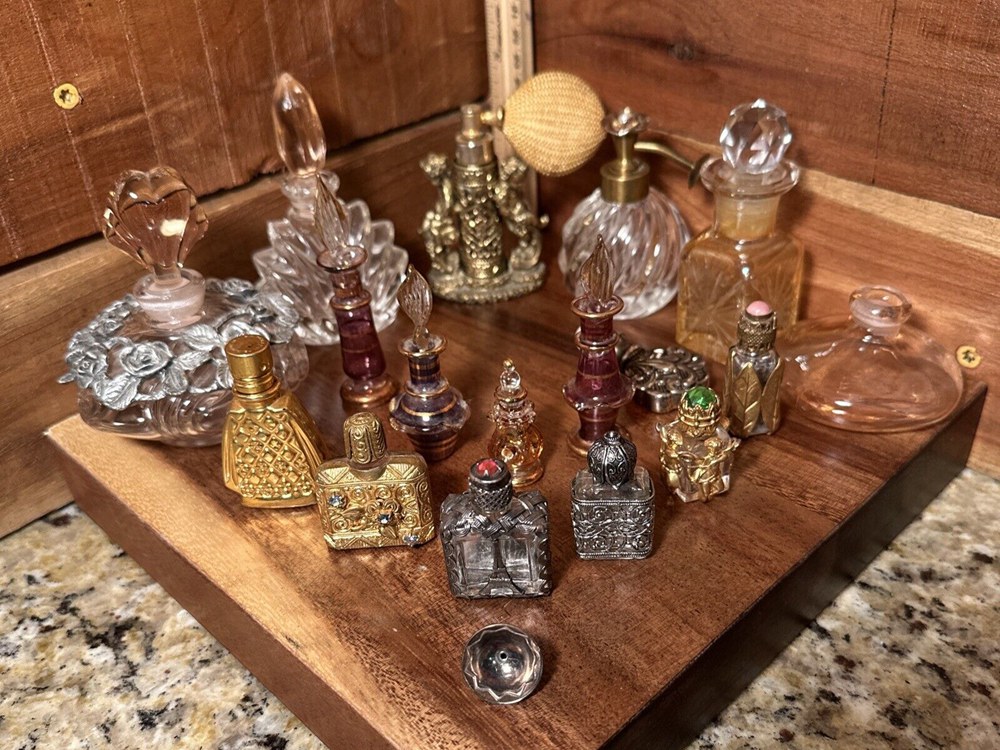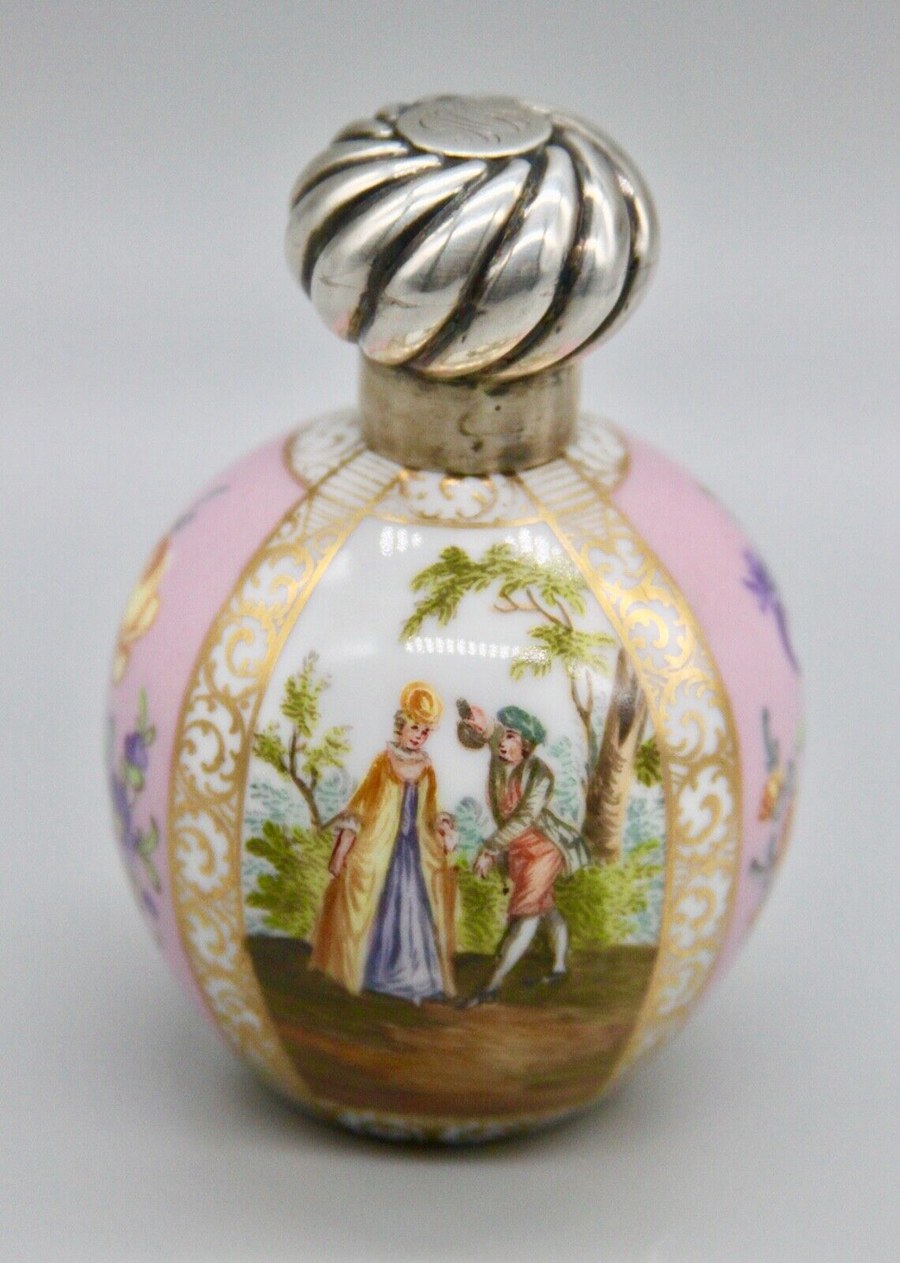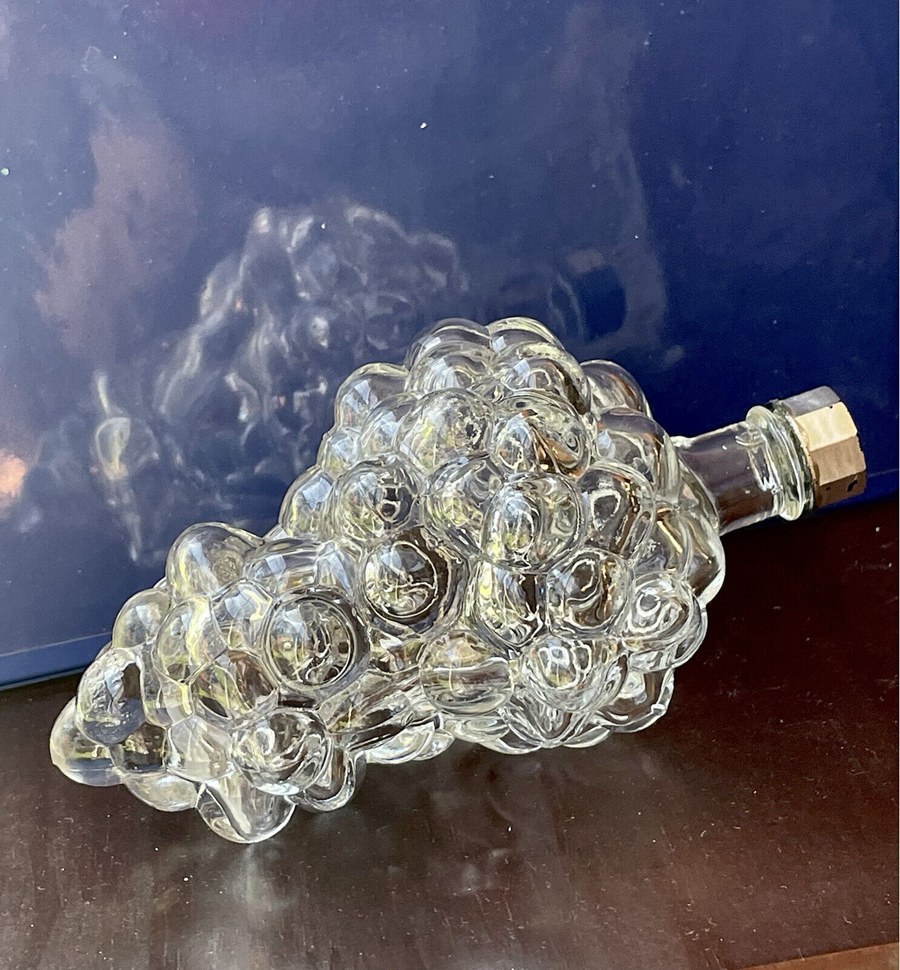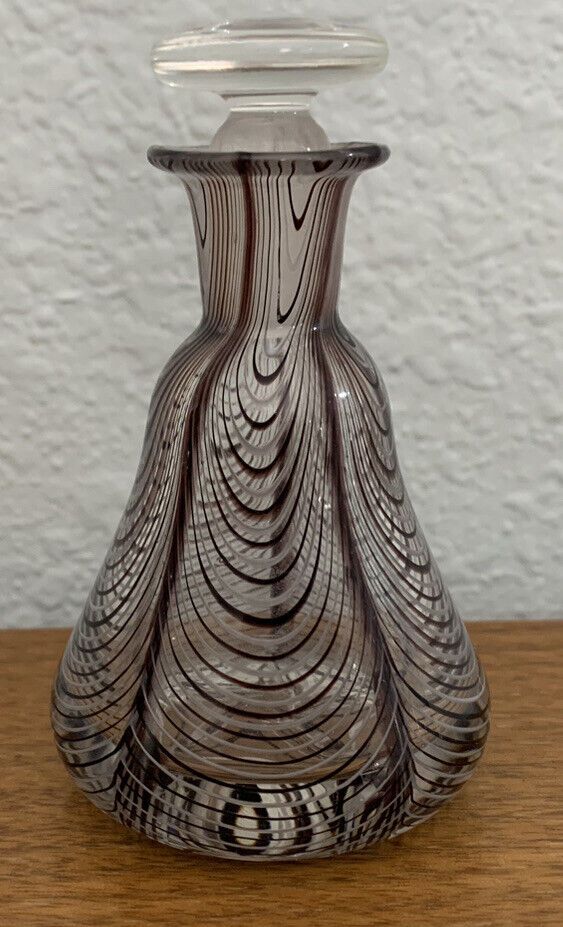Antique perfume bottles are captivating relics of a time gone by, enchanting collectors and enthusiasts alike with their delicate craftsmanship and elegant designs. These exquisite pieces not only showcase the art of glassmaking but also offer a glimpse into the history of fragrance and its role in society. From simple stoppered vials to intricately carved cameo masterpieces, the world of antique perfume bottles is vast and diverse, making identification and valuation an intriguing challenge.
As you embark on your journey to uncover the treasures of antique perfume bottles, it’s important to familiarize yourself with their key characteristics. The size of the bottle can be a useful indicator of its age and purpose; antique perfume bottles typically range from two inches or less to around five or six inches. The type of stopper, whether a simple cork or an ornate glass figure, can also provide valuable clues about your bottle’s identity. Additionally, examining the underside for markings or numbers can reveal fascinating information, though a magnifying glass or tissue paper rubbing may be necessary for greater clarity.
Throughout history, numerous types and styles of perfume bottles have emerged, a testament to the creativity and skill of artists and glassmakers. For instance, Galle French Cameo Perfume Bottles and Thomas Webb Cameo Glass Perfume Bottles are among the most valuable and sought-after vintage examples. Including valuation tables and images in your study of these enchanting perfume bottles can help build your expertise, allowing you to better understand and appreciate the true value and significance of your cherished collection. Happy exploring!
Table of Contents
Identifying Antique Perfume Bottles
Glass Design and Manufacturing Techniques
When you are examining antique perfume bottles, pay special attention to the glass design and manufacturing techniques. Some of the most popular design styles include Art Deco, Art Nouveau, and cut glass.
- Art Deco: This style reflects geometric shapes and bold colors. Look for bottles that showcase streamlined designs combined with bright colors and metallic accents.
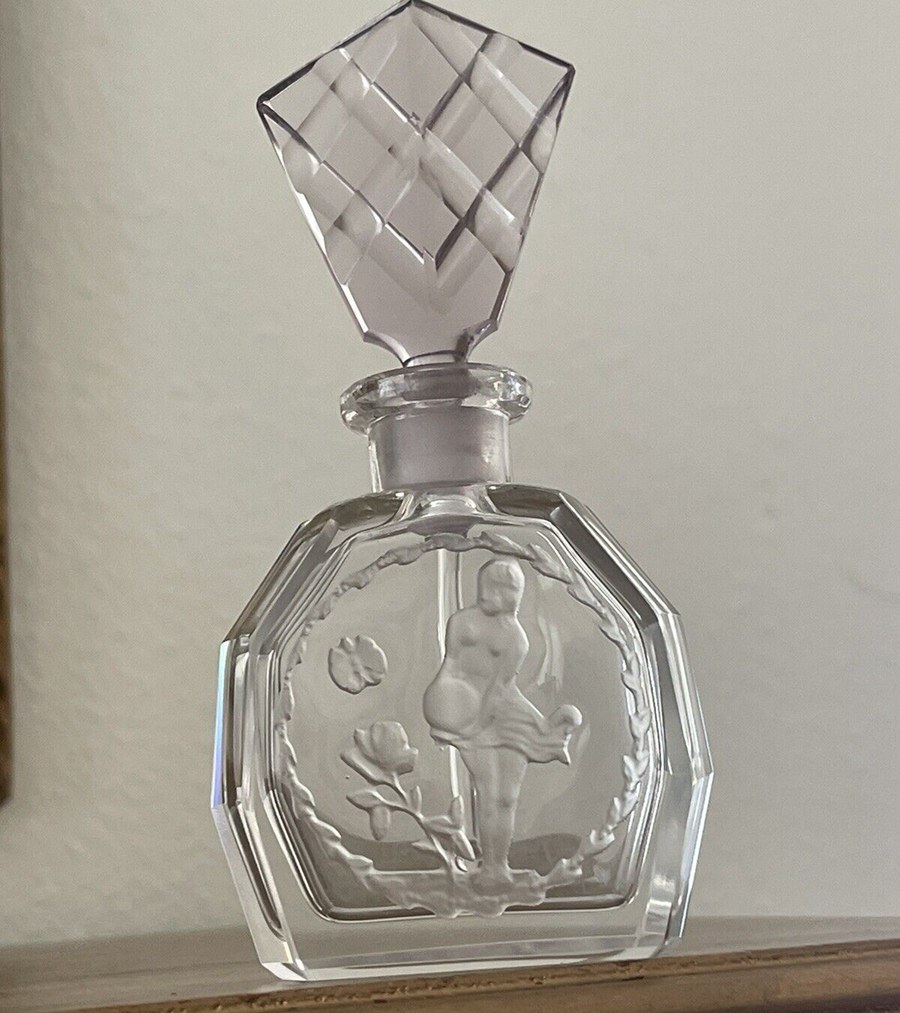
- Art Nouveau: This style emerged from the late 19th to early 20th centuries and is characterized by organic shapes inspired by nature. Look for bottles with flowing lines, floral motifs, and subtle colors.
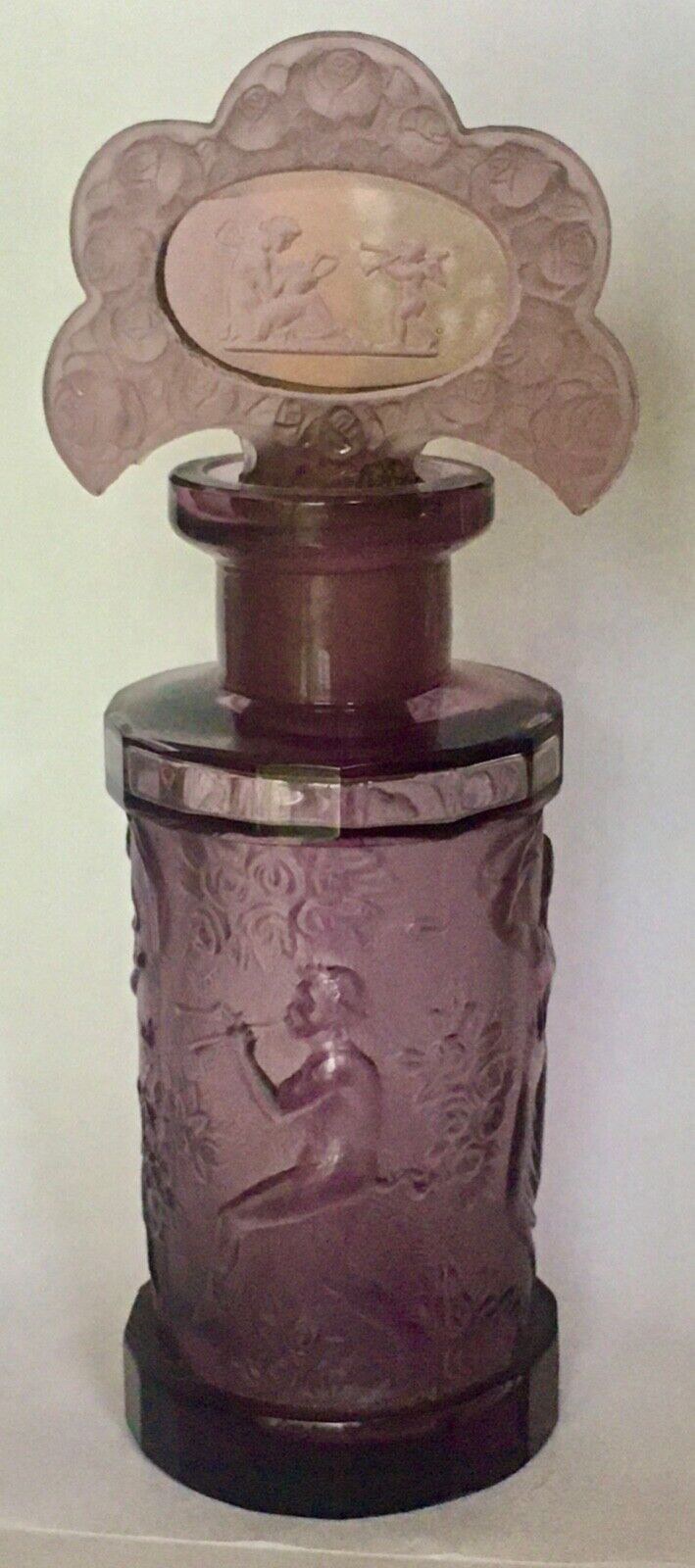
- Cut Glass: These bottles are skillfully designed with intricate patterns cut into the glass itself. Look for bottles with fine details, such as engraved or etched decorations.
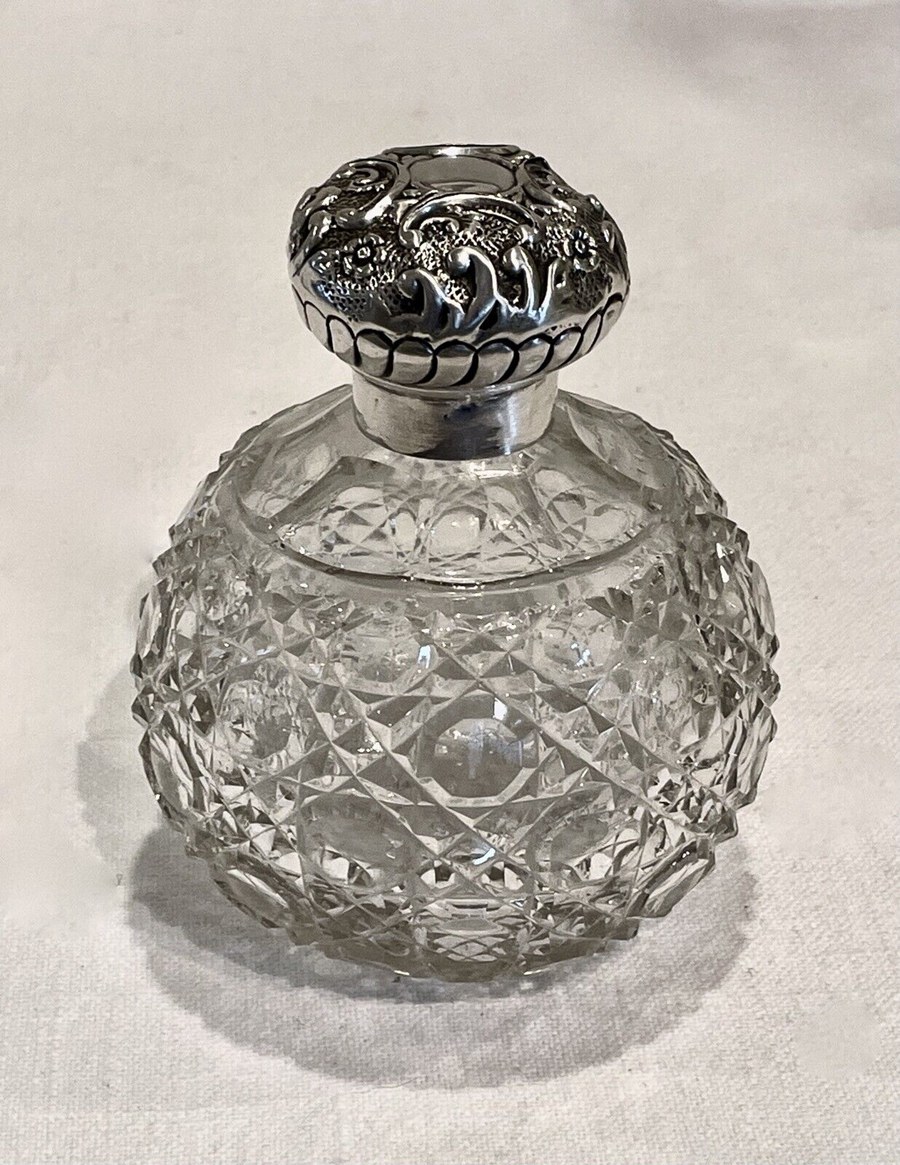
You can also identify the age of a glass bottle based on its manufacturing techniques. Check for mold lines, indicating that the bottle was made using molds. Glass stoppers were a common feature of perfume bottles in the past, so look for bottles with original stoppers for added value.
Bottle Shapes and Styles
Antique perfume bottles come in various shapes and styles, and certain types are more valuable than others. Some iconic examples are the Galle French cameo perfume bottle, characterized by its distinct design.
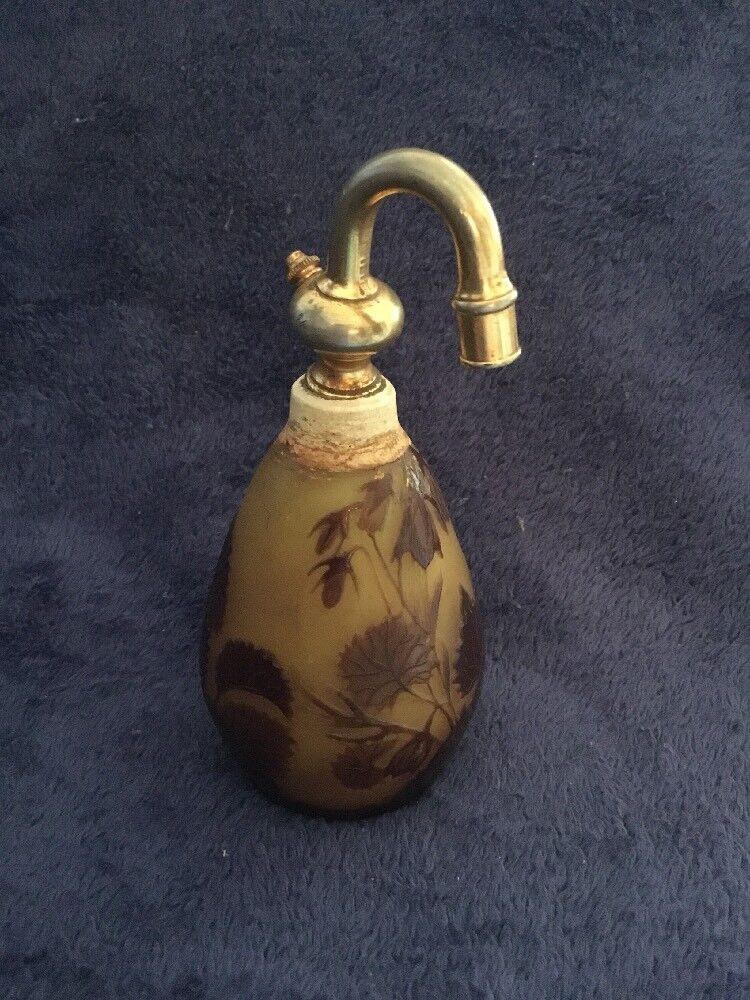
Explore different types of antique perfume bottles, including:
- Figural Bottles: Shaped like people, animals, or objects. Look for unique and detailed designs that add aesthetic value.

- Atomizers: Perfume bottles with a bulb and hose, used for spraying the fragrance. Check for functionality and original parts.
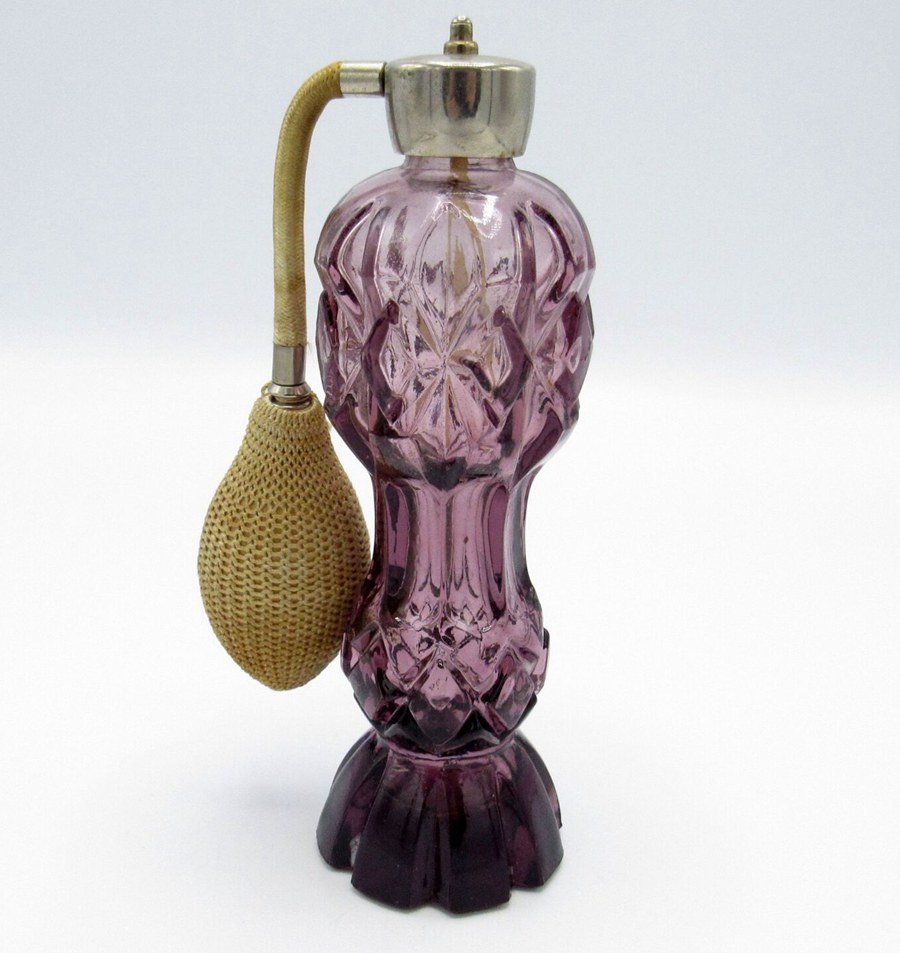
Keep in mind that size, materials, and condition can significantly impact a bottle’s value. Smaller sizes (2-5 inches) typically have higher prices. Crystal, glass, or wooden corks can increase valuation by 3-4%, while plastic, Bakelite, or metal caps may not affect the appraisal.
Remember to examine bottles for signatures, makers’ marks, or any other identifying features that can provide insight into the origin, age, and value of the piece. By learning how to identify glass designs, manufacturing techniques, and bottle shapes and styles, you can confidently evaluate and value your antique perfume bottles.
Famous Antique Perfume Bottle Designers
In this section, we will discuss some of the renowned designers responsible for crafting exquisite antique perfume bottles that are highly sought after by collectors today. We will focus on two significant designers: René Lalique and Thomas Webb & Sons.
René Lalique
René Lalique, a French glassmaker, is widely celebrated for his intricate Art Nouveau jewelry and designs. In the world of antique perfume bottles, Lalique is primarily known for creating stunning bottles featuring elegant, stylized flora or fauna motifs, and often incorporating elaborate frosted glass techniques.
Here are some popular examples of Lalique perfume bottles with their approximate valuations:
| Name | Pic | Description | Approximate Value |
| Lalique “Cyclamen” Perfume Bottle | 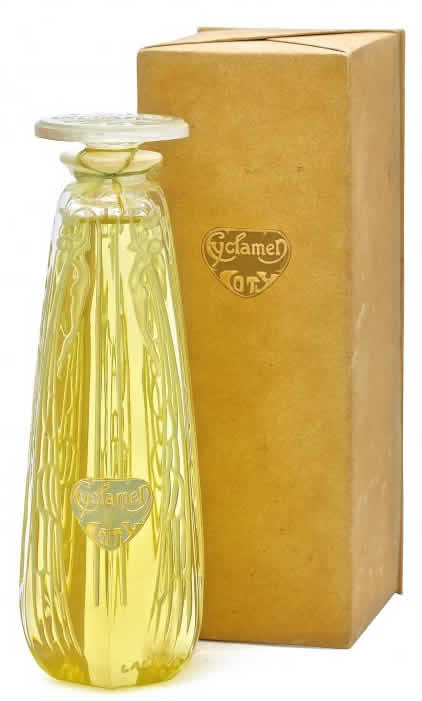 |
Frosted glass, featuring cyclamen flowers | $1,000 – $1,500 |
| Lalique “Cactus” Perfume Bottle | 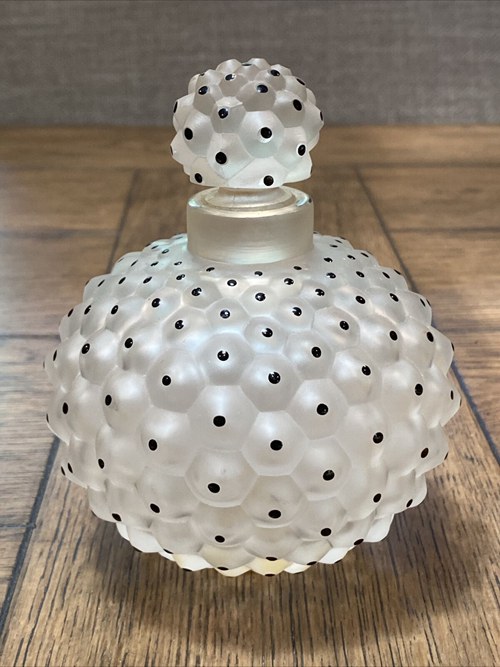 |
Black glass, cactus-shaped | $800 – $1,200 |
| Lalique “Tourbillons” Perfume Bottle | 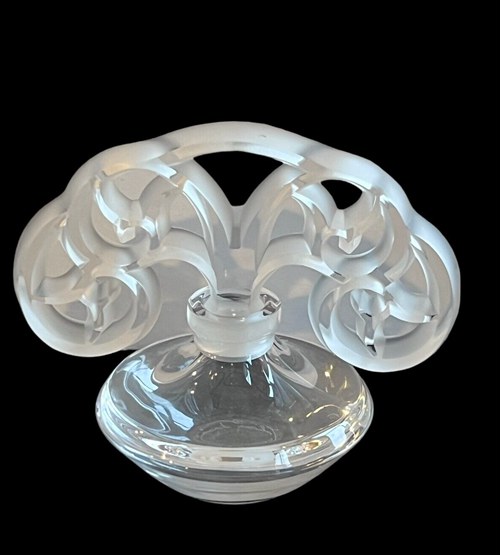 |
Blue glass, swirling lines representing twirling water | $500 – $800 |
Thomas Webb & Sons
Thomas Webb & Sons was an esteemed British glass manufacturing company active from around the mid-19th to the mid-20th century. Known for their high-quality cameo glass creations, they also produced beautiful perfume bottles. These bottles usually featured intricate engraving, vibrant colors, and delicate carvings of floral motifs, birds, or animals.
Here’s a selection of Thomas Webb & Sons cameo glass perfume bottles and their approximate values:
| Name | Pic | Description | Approximate Value |
|---|---|---|---|
| Thomas Webb Cameo Glass Perfume Bottle | 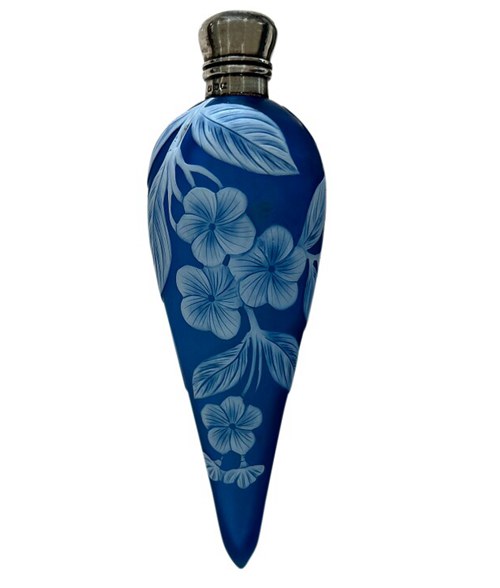 |
Featuring hand engraving of swan | $1,500 – $2,000 |
| Webb Cameo Falcon Head Perfume Bottle | 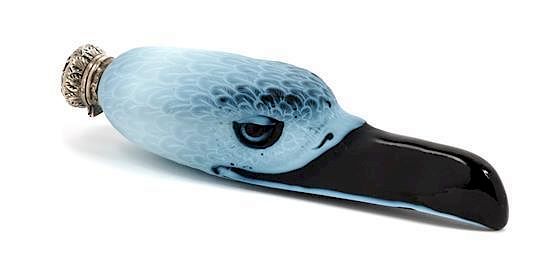 |
With carved falcon head stopper | $2,500 – $3,500 |
| Webb Cameo Owl Perfume Bottle | 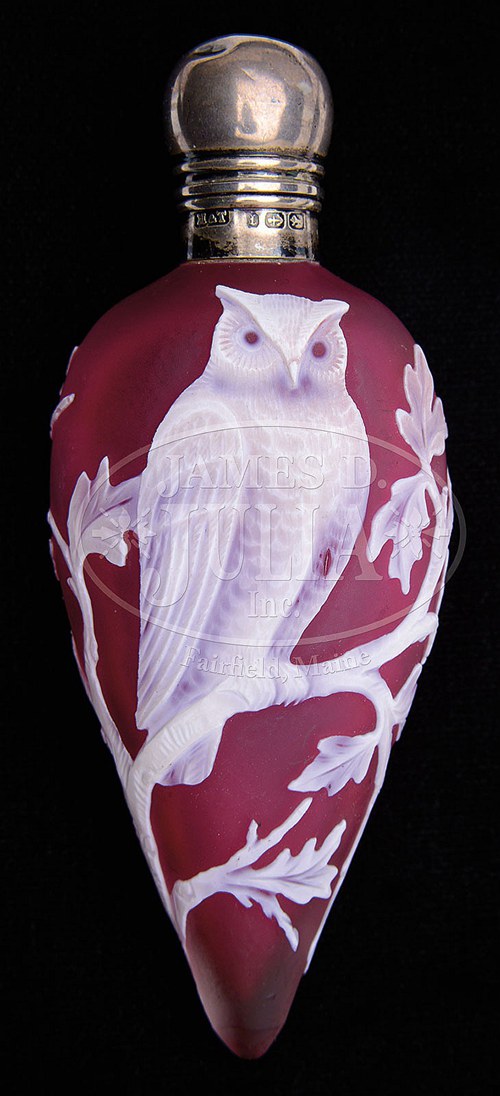 |
Engraved owl motif with foliage | $3,000 – $4,500 |
Again, these valuations may fluctuate based on various factors such as rarity, condition, and market demand.
By familiarizing yourself with the characteristics and values of the works by these famous designers, you can better recognize and appreciate the collectible antique perfume bottles you might come across.
Age and Dating Techniques
When examining antique perfume bottles, there are several key aspects that will help you determine their age and value. In this section, we will discuss some techniques that you can utilize in identifying and dating your historic glass bottles.
Bottle Age
The age of a perfume bottle is a significant factor that affects its value. Here are some pointers to help you determine the age of an antique bottle:
- Mouth of the bottle: Look at the mouth of the bottle. As a general rule, screw top bottles were made after 1910, while cork top bottles generally vanished around the turn of the 20th century.
- Mold seam and lip: Inspect the mold seam and where the lip meets the bottle. Hand-blown bottles typically have an applied lip.
- Markings: Check for any signature or maker’s mark on the bottle, as this can help you determine the origin, manufacturer, and time period it was made.
- Characteristics: You can also use certain characteristics to date very old bottles. For example, look for specific shapes, designs or color patterns that were prominent during a particular era.
Types of Perfume Bottles
Here are a few common types of antique perfume bottles you might come across, along with their assumed ages:
17th Century Glass Bottle

17th Century Glass Bottle: These bottles are some of the rarest and most valuable. They often feature intricate designs and unique shapes that reflect the craftsmanship of the time.
Late 19th Century Porcelain or Ceramic Bottle
These bottles can be quite ornate and may feature hand-painted scenes, gilt details, or elaborate shapes. They can be highly desirable among collectors if they are in excellent condition and have a maker’s mark.
Early 20th Century Leaded Glass Crystal Bottle
These bottles feature a higher lead content in the glass, which makes them more brilliant and reflective than standard glass. They often have interesting shapes and designs, sometimes with intricate cut patterns or frosted details.
By using the techniques discussed above, you should be able to date your antique perfume bottles and better understand their value. Keep in mind that historical trends and market demand can impact the valuation, so it is essential to research prices and consult with experts when necessary.
Determining Value and Worth
Condition and Rarity
When it comes to evaluating the worth of antique perfume bottles, two key factors are the condition and rarity of the item. A bottle in excellent condition, with no chips, cracks, or signs of repair, will be more valuable than one with obvious damage. Additionally, perfume bottles that were produced in limited quantities or are considered rare fetch higher prices. Some points to consider:
- Check for chips, cracks, or restoration work.
- Look for any signs of wear or damage to labels and stoppers.
- Consider the rarity of the bottle, as this can significantly impact its value.
Historical Significance
Another factor that contributes to the value of an antique perfume bottle is its historical significance. Perfume bottles that were owned by famous individuals or played a role in important events tend to be more collectible and valuable. When evaluating your bottle, research its history and look for any connections to well-known people or events. This can add a unique appeal and increase its worth. For example:
- Examine any accompanying documentation or provenance.
- Research the bottle’s history, such as its origin or any previous owners.
- Look for connections to historical events or famous individuals.
Designers and Manufacturers
The designer and manufacturer of a perfume bottle can also contribute to its valuation. Renowned designers, such as Lalique and Steuben, command higher prices in the antique perfume bottle market. Similarly, bottles produced by prestigious manufacturers, such as Baccarat and R. Lalique, are considered more valuable. Keep these points in mind:
- Identify the designer and manufacturer of the bottle.
- Research their reputation and significance in the market.
- Compare your bottle to known examples from the same designer or manufacturer.
As you evaluate your antique perfume bottle, consider the factors outlined above to determine its value and worth accurately. Remember that condition, rarity, historical significance, and the reputation of the designer and manufacturer all play a role in the overall value of your collectible. By carefully examining and researching your perfume bottle, you can gain a better understanding of its worth and ensure that you are making informed decisions about its future.
Popular Materials and Decorative Techniques
Cameo Glass
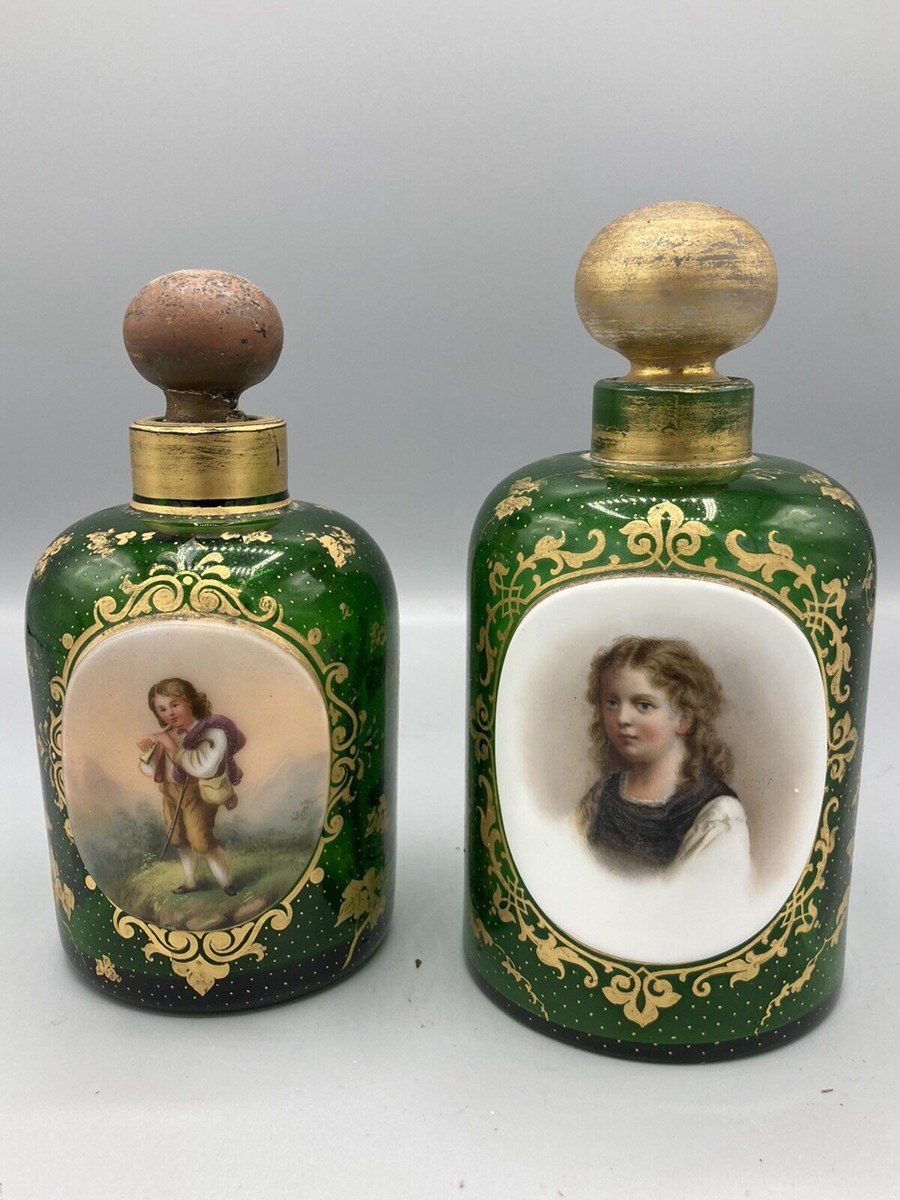
Cameo glass perfume bottles are highly sought after for their intricate designs and exquisite craftsmanship. These unique bottles typically feature raised designs on a contrasting background, created by layering different colors of glass and then carving or etching away the top layers to reveal the design. You will often find cameo glass perfume bottles featuring delicate floral patterns, intricate scenes, or ornate animals.
Silver Overlay

Silver overlay perfume bottles are another popular choice for collectors, thanks to their elegant appearance and opulent materials. These bottles are made by applying a thin layer of silver onto the surface of the glass, often featuring intricate patterns or designs. In some cases, you may come across bottles with gold overlay as well, which adds an extra touch of luxury.
When evaluating the value of silver or gold overlay perfume bottles, look for indicators such as maker’s marks, the quality of the overlay work, and the overall condition of the bottle. Keep in mind that the precious metal content also plays a role in the value of these perfume bottles.
Valuation Table:
| Material | Condition | Estimated Value |
| Cameo Glass | Excellent | $300 – $800 |
| Cameo Glass | Good | $150 – $300 |
| Silver Overlay | Excellent | $500 – $1200 |
| Silver Overlay | Good | $250 – $500 |
| Gold Overlay | Excellent | $1000 – $3000 |
| Gold Overlay | Good | $500 – $1000 |
As you explore the world of antique perfume bottles, take the time to learn about the different materials and decorative techniques used throughout history. This knowledge will enrich your appreciation for these exquisite pieces and help you make informed decisions when building your collection or evaluating the value of your antique perfume bottles.
Types of Collectible Antique Perfume Bottles
As a collector, understanding the value of your antique perfume bottles is important. In this section, we will discuss different types of collectible antique perfume bottles, including the Art Deco era, Art Nouveau period, vanity flasks, and atomizers. By identifying these categories, you can better evaluate and appreciate your collection.
Art Deco Era
The Art Deco era (1920s – 1930s) was characterized by geometric designs, bold colors, and streamlined shapes. During this time, glassmakers embraced innovative techniques to create unique and highly sought-after perfume bottles. Some of the most famous Art Deco perfume bottle manufacturers included Lalique, Baccarat, and Daum.
To identify an Art Deco perfume bottle, look for:
- Geometric shapes and patterns
- Bold and contrasting colors
- Streamlined forms
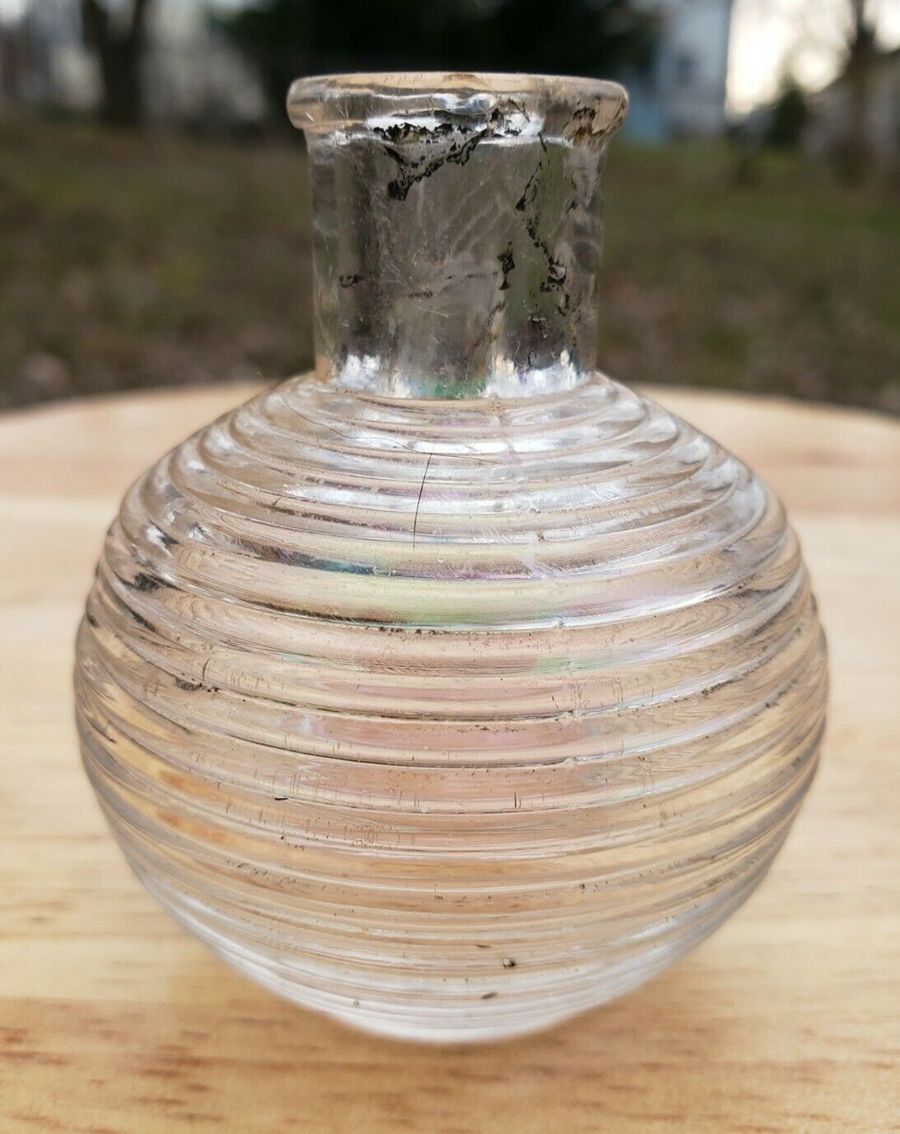
Art Nouveau Period
The Art Nouveau period (1890s – 1910s) was characterized by flowing, organic lines, and motifs inspired by nature. Emile Gallé, Thomas Webb, and Loetz were some of the prominent glassmakers in this era, known for their exquisite, hand-crafted perfume bottles.
Identifying features of Art Nouveau perfume bottles include:
- Organic and flowing lines
- Nature-inspired motifs
- Intricate details
Vanity Flasks
Vanity flasks were elegant glass or silver bottles used to store perfume, cologne, or cosmetics during the 19th and early 20th centuries. They often featured intricate designs and came in various shapes, such as cylindrical, oval, or rectangular.
To identify a vanity flask, look for these features:
- Delicate and intricate designs
- Clear or colored glass or silver materials
- Often accompanied by a matching stopper
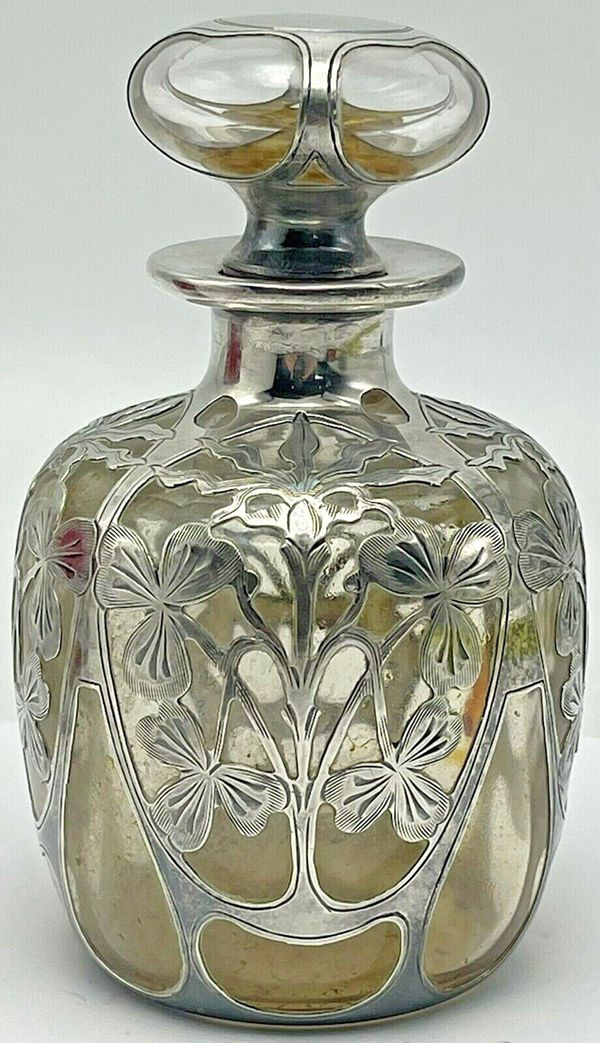
Atomizers
Atomizers were introduced in the early 20th century and revolutionized the way perfume was applied. These bottles featured a bulb or pump mechanism that allowed users to spray a fine mist of perfume onto their skin or clothes. Popular atomizer manufacturers include DeVilbiss, Marcel Franck, and Irice.
To identify an atomizer, look for:
- Bulb or pump mechanism
- Glass, metal, or ceramic materials
- Designed for spraying perfume

Understanding Antique Perfume Bottle Labels
Identifying antique perfume bottles can be a fascinating and rewarding endeavor. The key to understanding their value lies in the details of the labels, the bottle type, and the bottle color. In this section, you will learn how to recognize and analyze these features, which will help you determine the worth of your antique perfume bottles.
Labels on antique perfume bottles can give you valuable information about the age, manufacturer, and contents of the bottle. Look for markings or signatures on the base or sides of the bottle, as these can provide clues to the maker and the time period it was produced. In the 19th century, for example, side-lettering on molds was common in England, while base markings were more prevalent in the United States and France by the 1880s. Here are some common types of labels and their impact on value:
| Label Type | Impact on Value |
| Glass Cameo | High |
| Etched or Engraved | Medium |
| Paper | Low |
Additional Resources for Collectors
As a collector of antique perfume bottles, it’s important to have access to resources that can assist you in identifying and valuing the treasures you come across. In this section, we’ll provide you with references, links, and member organizations that are valuable for collectors like you.
The International Perfume Bottle Association (IPBA) is a valuable resource for collectors, offering information and education about various aspects of perfume bottles and related vanity items. They also promote collecting these unique items and fostering fellowship among collectors. Becoming a member of IPBA gives you access to a wealth of knowledge and networking opportunities. To join, visit their website: International Perfume Bottle Association.
When it comes to identifying and valuing antiques, books can be a fantastic resource. Here are a few recommended titles available to help you on your journey:
- “Perfume Bottles for Collectors” by Madeleine Marsh
- “Antique Perfume Bottles: Identification & Price Guide” by Christie Mayer Lefkowith
- “Collector’s Encyclopedia of Compacts, Vol 2: Carry Alls and Purses” by Frances Johnson
Some useful resources for finding pictures of antique perfume bottles include:
- Invaluable: An online auction platform that allows you to browse thousands of vintage and antique perfume bottles, often with high-quality photographs and descriptions.
- M.S. Rau: A site that offers a curated collection of antique perfume bottles for sale, with detailed photographs and information about each piece.
If you have specific perfume bottles in your collection, you might benefit from creating a valuation table to keep track of the details and values. Consider the following format:
| Bottle Description | Year | Maker’s | Maker’s Mark/Signature | Estimated Value |
| [Example] | 1900 | Glass | [Example] | $500 |
This way, you can easily reference the information for each of your antique perfume bottles, and track changes in their value over time.
By using these resources, becoming a member of the IPBA, and maintaining a valuation table for your collection, you will undoubtedly expand your knowledge and expertise in the realm of antique perfume bottles. Happy collecting!
Care and Handling of Antique Perfume Bottles
As a collector of antique perfume bottles, proper care and handling is essential to preserve their value and ensure their longevity. In this section, we will discuss how to handle, clean, and store these delicate items to maintain the integrity of your collection.
When handling your antique perfume bottles, always make sure your hands are clean and dry. This prevents any oils, dirt, or moisture from causing damage to the delicate materials. Wearing gloves, preferably made of cotton or nitrile, can also provide extra protection for your valuable bottles.
To clean your antique perfume bottles, first remove any exterior caps and nozzles. It is vital to perform this task gently, as applying too much pressure may cause damage to these delicate components. Once the exterior parts have been removed, you can proceed with cleaning the bottle. Due to the antique nature of these bottles and the potential fragility of the materials they’re made from, it is recommended to use a gentle cleaning solution, such as a mixture of mild soap and warm water. Remember to dry the bottles thoroughly to prevent moisture damage.
When it comes to storing your antique perfume bottle collection, it is crucial to choose a safe and stable environment. A display case or glass cabinet away from direct sunlight and temperature fluctuations is ideal. This will help protect your bottles from potential damage and fading that can occur from exposure to sunlight and changes in temperature and humidity.

